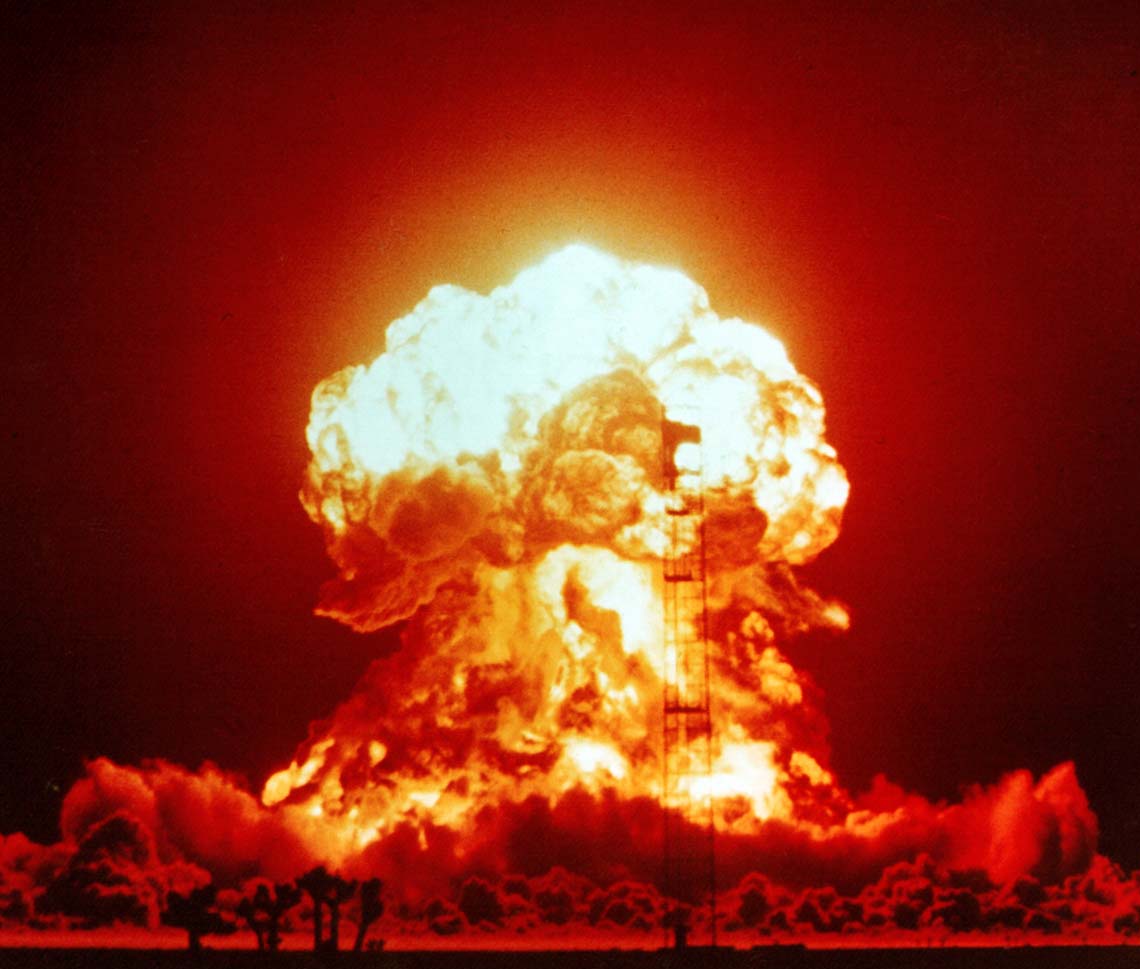Part 2 of 2 Parts (Please read Part 1 first)
There is also the possibility of a non-state terrorist organization obtaining a nuclear device and using it against a state, nuclear or otherwise. It is possible that some nuclear warheads may have gone missing when the Soviet Union fell apart in 1991. There are nuclear states such as Pakistan and North Korea which have a history of shading dealings in nuclear materials and technologies which might sell a warhead to a terrorist group. The detonation of a single nuclear device by terrorists in a major city could cause the death of millions and destabilize the global economic and political system. There have been projections that a small nuclear device exploded fifty miles above the center of the U.S. could effectively destroy the U.S. with the resulting electromagnetic pulse which would fry the continental power grid. The collapse of the U.S. would lead to the collapse of the world economic system and the possible death of billions.
And, finally, with the aging of the nuclear arsenals of the U.S. and Russia as well as the acquisition of nuclear weapons by smaller and less stable countries, there is always the danger that a nuclear warhead will be detonated accidentally. Nuclear weapons systems are designed with technology and procedures to prevent this but no human build system is perfect. There have been close calls in the past where a nuclear weapon could have been accidentally set off.
There are a number of existential threats facing the human race including climate change, asteroid impacts, massive solar flares, plagues, collapse of major infrastructure, overpopulation leading to starvation, etc. While the threat of nuclear detonations in populated areas has decreased since the end of the Cold War, it is certainly not gone by any means. The U.S. and Russia are both upgrading their nuclear arsenals. Non-nuclear states are working to obtain nuclear weapons. There are international tensions that could boil over into military conflicts that could result in nuclear detonations. The fact that no one can win a nuclear war will not necessarily stop someone from starting one.
re is a global movement to get rid of all nuclear weapons. The human race has cringed under the nuclear threat for far too long. Pressure must be brought to bear on politicians who believe that the possession of nuclear weapons makes their nation more secure. If it was ever the case, it is certainly not the case now. We were fortunate indeed that nuclear war never broke out between the U.S. and Soviet Union but, with more and more nuclear nations and deteriorating global stability, our luck may run out.
There is a close connection between nuclear power and nuclear weapons. Nuclear power was originally pushed on the citizens of the U.S., the Soviet Union, China and other nuclear states with the promise that it would be cheap and safe. The real reason for peaceful nuclear power projects was to support the nuclear weapons programs. The same enrichment process that creates fuel for nuclear reactors can be used to enrich uranium for nuclear weapons. The nuclear waste produced by nuclear reactors can be processed to extract plutonium for nuclear weapons. It is now obvious, after decades of use, that nuclear power is neither cheap nor safe. It would be best if the human race, in addition to destroying all nuclear warhead, also shut down all nuclear power plants and shifted to other sources of low-carbon renewable energy.
